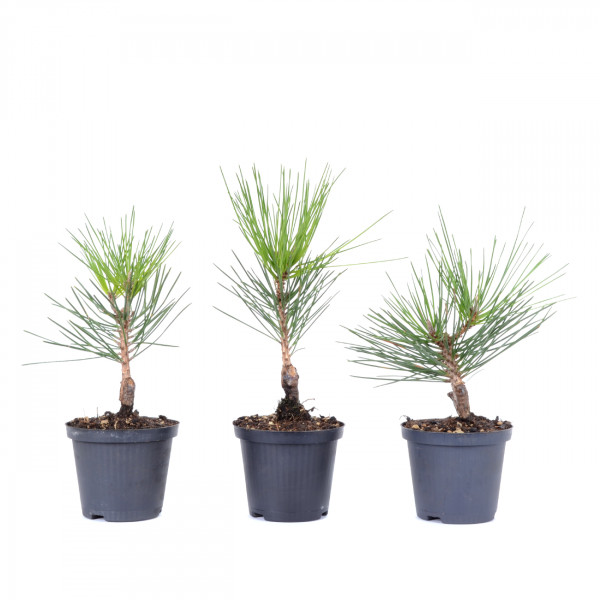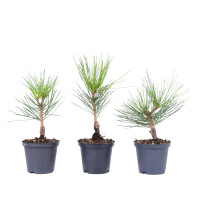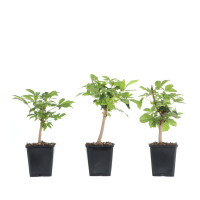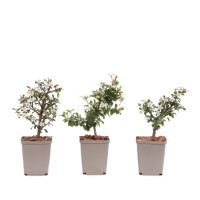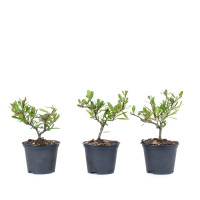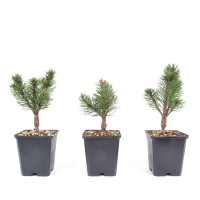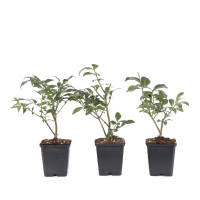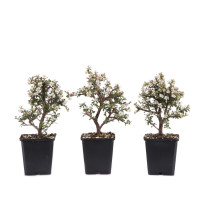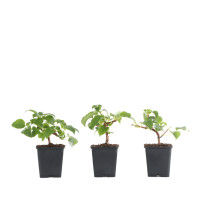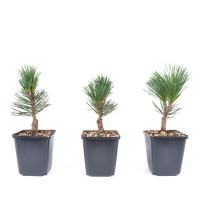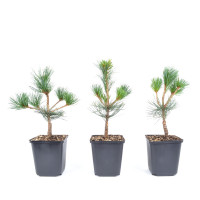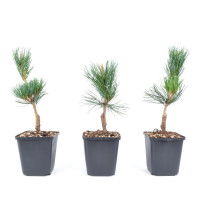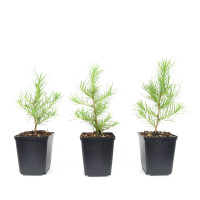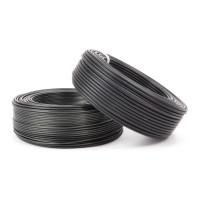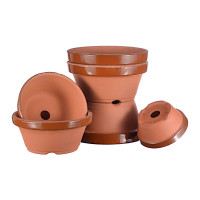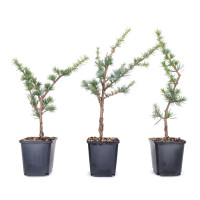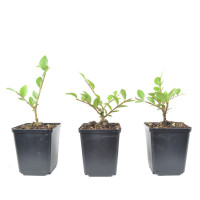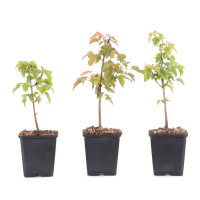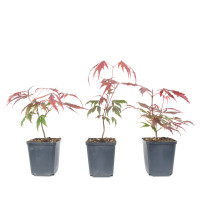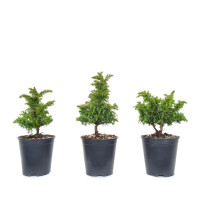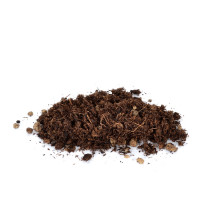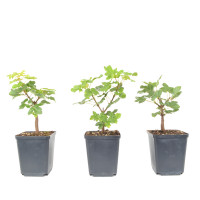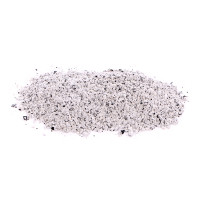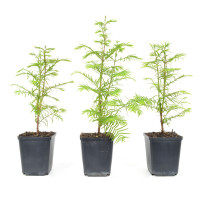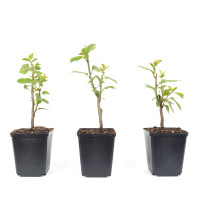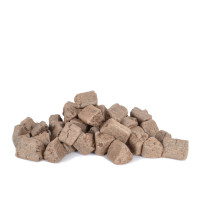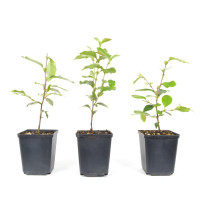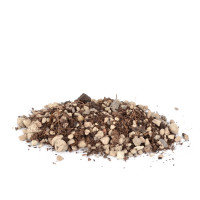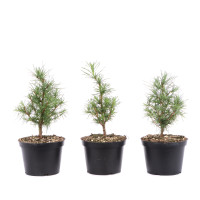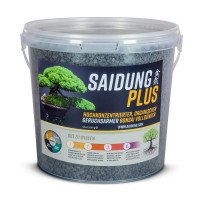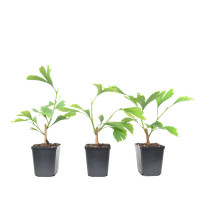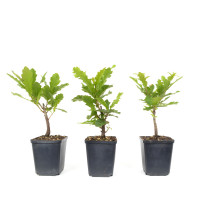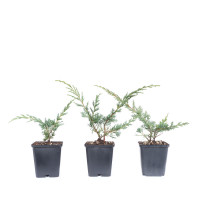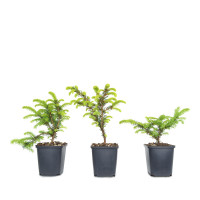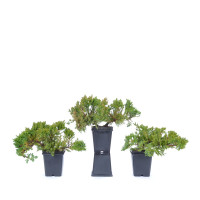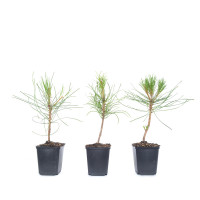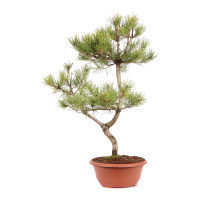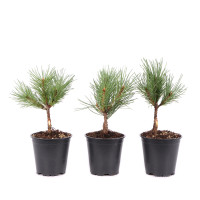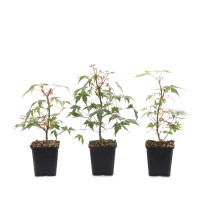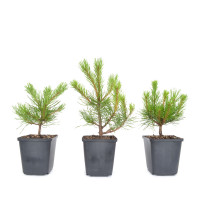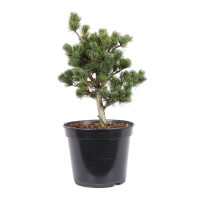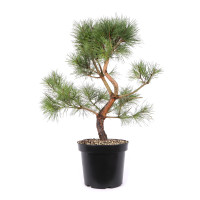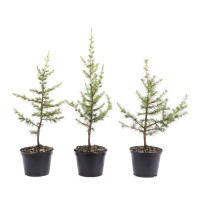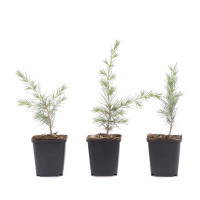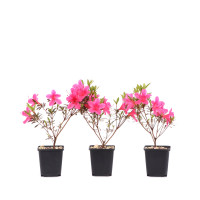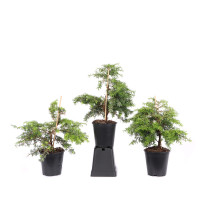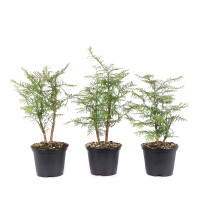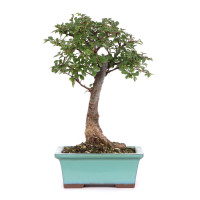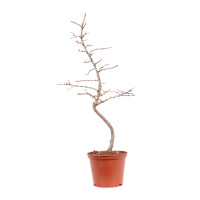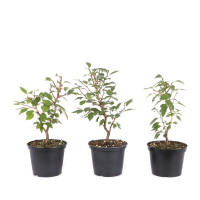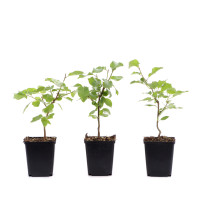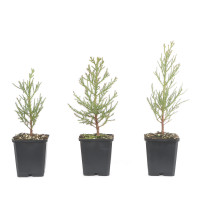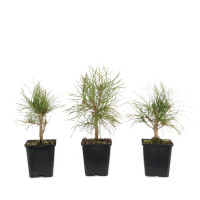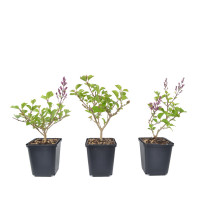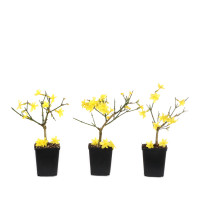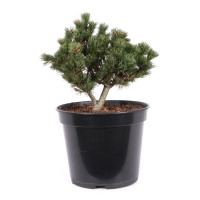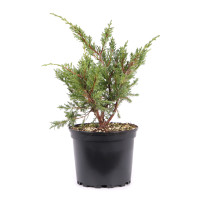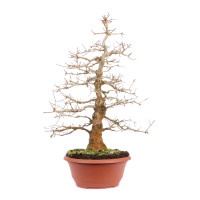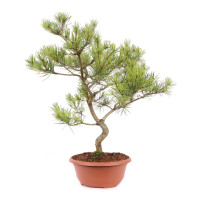- Order number: 1017-01-T
- Addtion: grafted
- Height: ca. 10 - 15 cm (no pot)
- Foliage: evergreen
- Bonsai Pot: plastic pot
- Age: 1 year
- Origin: Germany
- Product contents: You will get a similar plant
Pinus thunbergii var.corticosa - Cork-barked Japanese Black Pine
General:
Japanese black pines (Pinus thunbergii) grow on various islands in Japan and in the coastal area of South Korea. They grow up to 30 meters high and develop a broad crown. Black pines are evergreen, two-needle and develop a very attractive bark-like bark.
Care as a bonsai:
In Japan, the black pine is one of the most common types of bonsai. Although the plant does not have any climatic problems with us, it is not easy to create a good bonsai from a young plant. If you were to plant the pine in the garden, it would grow as strongly as the Austrian black pine (Pinus nigra), only slimmer and with slightly shorter needles. In the pot or in the bowl, growth is slowed down a bit, but it still takes some work and knowledge to keep the growth compact and finely branched with short needles. Our experience so far is that the new annual shoots are only severely shortened after they have been fully developed in July / August. As a result, the pine forms many small new buds in the same year. In the next year at the latest, new but smaller shoots with shorter needles will form from these small buds. Root pruning and repotting are carried out in September. A structurally stable, airy mixture is used for the substrate and attention is paid to the presence of mycorrhizal fungi. You can recognize the fungus by an even, fine and white coating that envelops the roots and, ideally, runs through the whole earth. You can wire and design from October to April. After that, the plant should best stand frost-free. In summer, a sunny location is very beneficial.
Special features of the variety:
The special thing about this variety of Japanese black pine is the bark. The trunk bursts at a young age and extreme cork strips are formed. This leads to a bizarre growth in which the plant looks like a green rocky landscape in old age.

